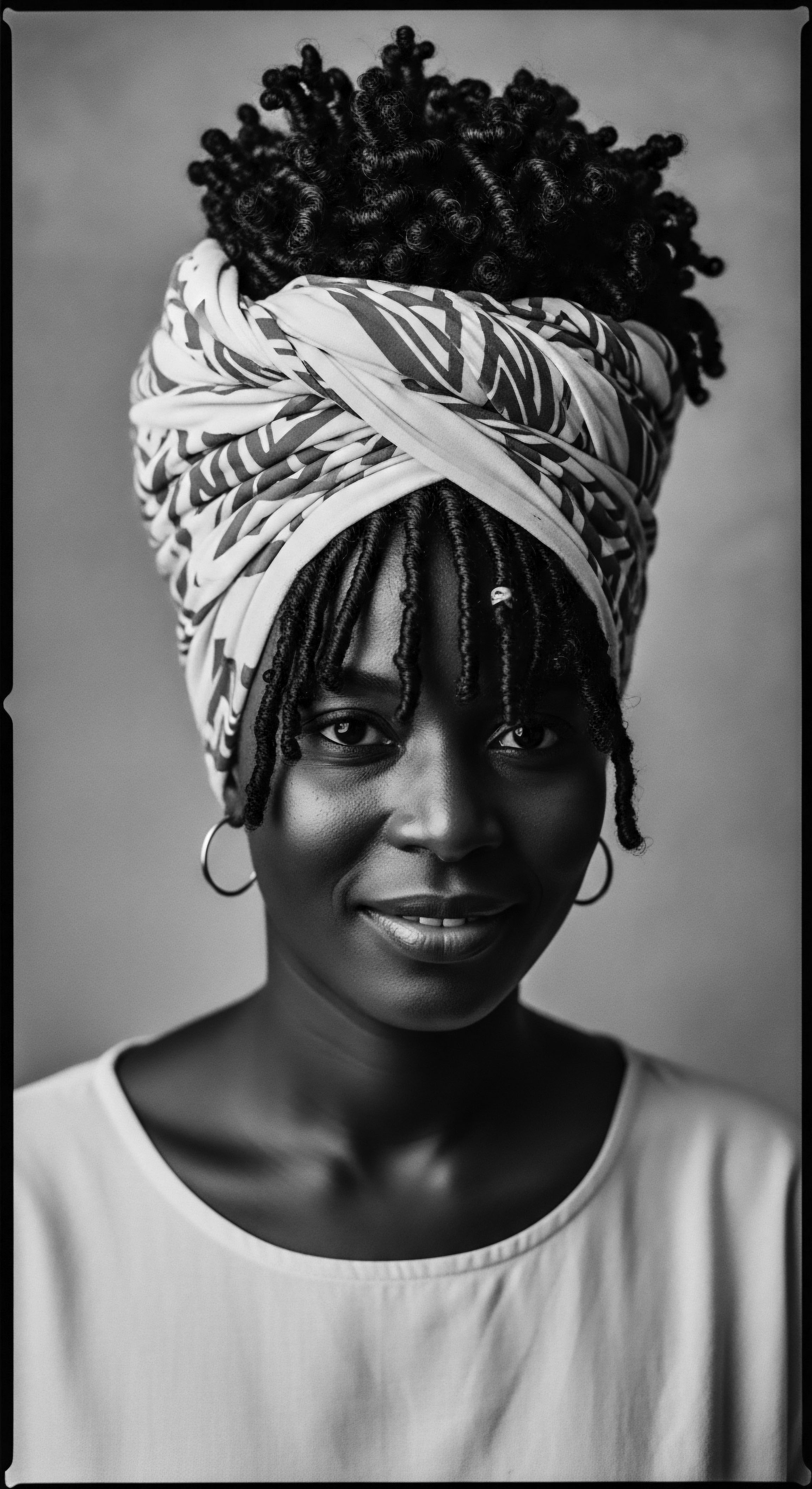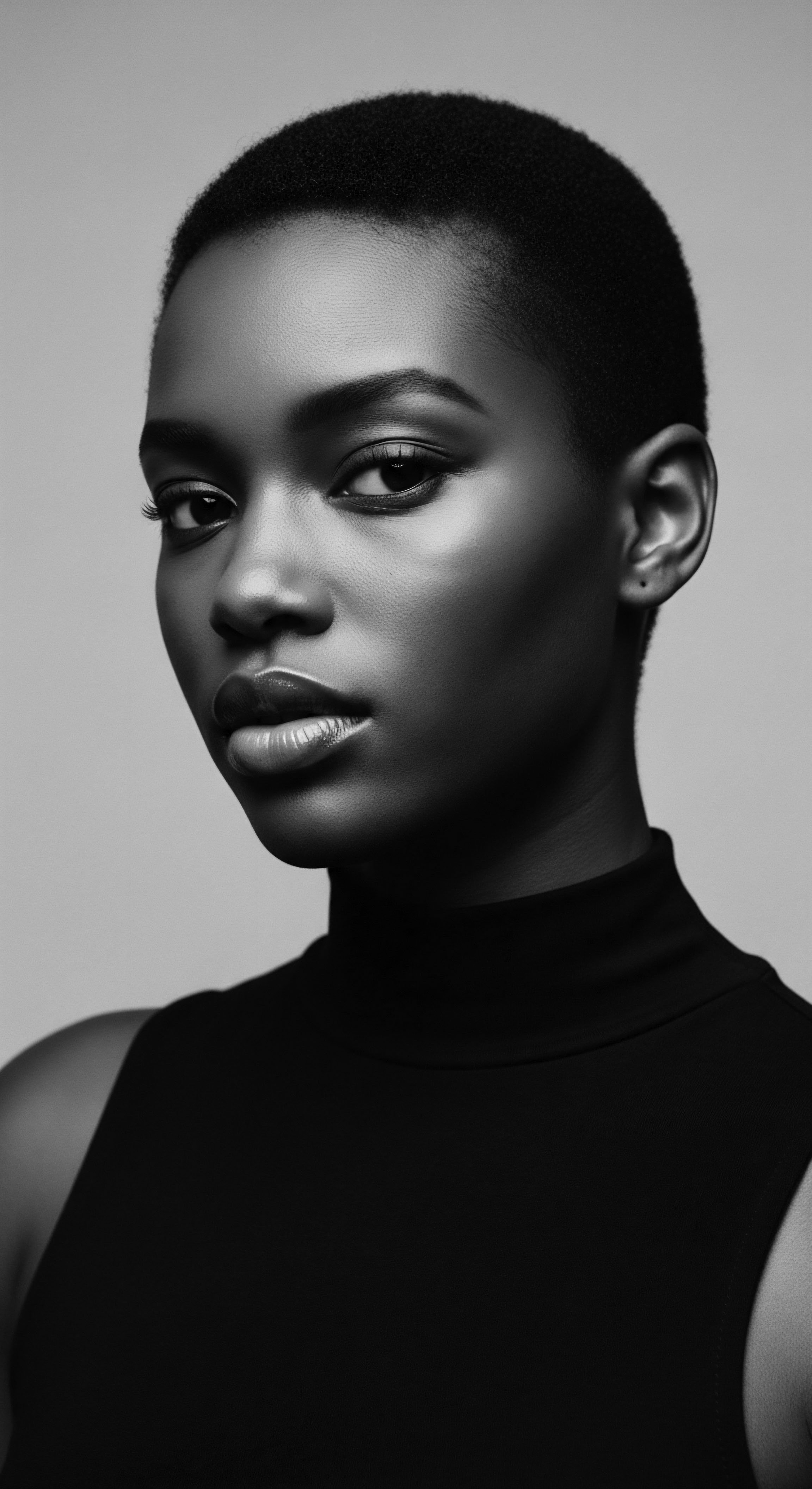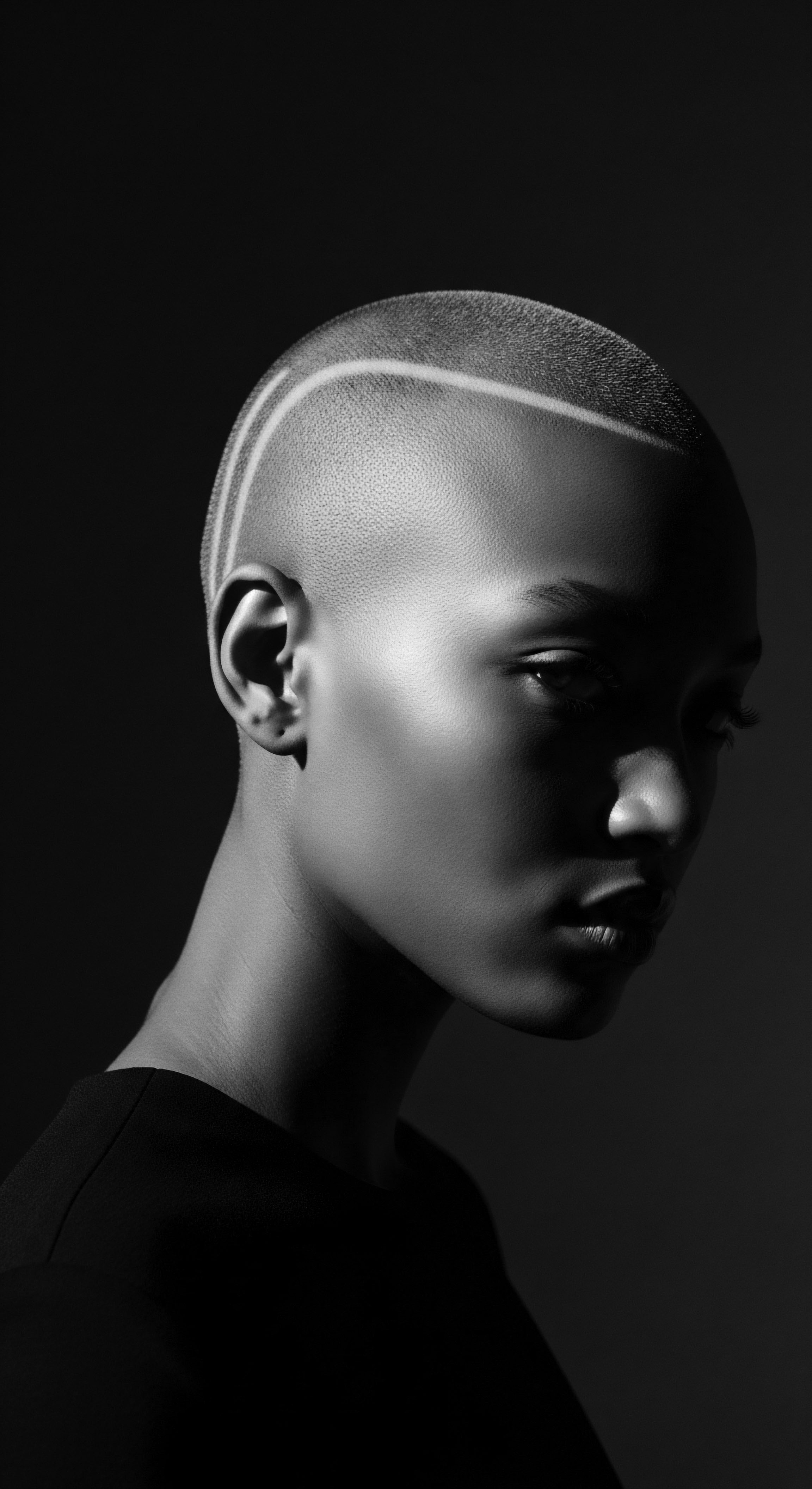
Roots
Feel the whisper of generations, a silent current flowing through each coil, each kink, each wave. It is the language of our strands, a deeply etched story of resilience, ingenuity, and profound beauty. For those of us whose hair carries the ancestral memory of Africa and the diaspora, the path of care has always been more than mere routine; it is a ritual, a connection, a heritage. When we speak of Caribbean oils—the rich, golden pour of coconut, the viscous strength of castor, the rare comfort of soursop—we are not merely discussing botanical extracts.
We are speaking of legacies, of remedies passed down through sun-drenched kitchens and hushed wisdom, validating practices that held our crowns in reverence long before laboratories began to unravel their secrets. This exploration seeks to honor that lineage, peering into the very structure of our hair to see how the earth’s bounty, once intuitively applied, finds its scientific validation in the modern understanding of textured hair’s unique architecture.
Our hair, with its remarkable twists and turns, possesses a geometry that sets it apart. Scientifically, textured hair often exhibits an elliptical or flat cross-section, a contrast to the rounder shape of straight hair. This distinctive shape, along with the varying points of curvature along the hair shaft, impacts how light reflects, how moisture behaves, and how natural oils distribute. Consider the cuticle , the outermost layer, which in textured hair can be more lifted or uneven, creating more points of potential moisture loss.
The integrity of this layer becomes a central focus in its care. Below the cuticle lies the cortex , a complex structure of keratin proteins, providing strength and elasticity. The specific arrangement of these protein bonds shapes the hair’s curl pattern. The innermost layer, the medulla , is not always present in every hair type but contributes to overall hair density.

Hair’s Ancestral Architecture
How did our ancestors understand the needs of hair so distinct?
Long before microscopy, the hands that tended textured hair across the Caribbean understood its thirst, its tendency toward dryness, its need for particular kindness. They observed, they experimented, they passed on knowledge. The very definition of healthy hair in these communities revolved around certain sensory cues ❉ the gleam of well-oiled strands, the softness to the touch, the spring in a coil. This intuitive wisdom aligns strikingly with contemporary trichology.
The elliptical nature of textured hair, for example, means natural scalp sebum struggles to travel down the spiraling shaft effectively, leaving the ends particularly vulnerable to dryness. This inherent characteristic made topical oil application a practical and necessary step in traditional care regimens.
The profound wisdom embedded in ancestral Caribbean hair practices often mirrors modern scientific understanding, revealing an intuitive grasp of textured hair’s unique needs.
Hair growth cycles, though universally shared, are experienced uniquely depending on hair type and cultural practices. The anagen phase , or active growth, is followed by the catagen (transition) and telogen (resting) phases. For textured hair, breakage is a constant adversary, often mistaken for a lack of growth.
Traditional oiling, often accompanied by gentle manipulation, sought to minimize this breakage, thus retaining length. This aligns with the scientific aim of reducing mechanical stress and improving elasticity, allowing the hair to reach its full anagen potential.

Mapping Hair’s Journey ❉ Growth and Renewal
Understanding the distinct phases of hair growth provides a scientific lens through which we can appreciate the protective measures that Caribbean oil traditions offered.
- Anagen Phase ❉ The longest phase, where hair actively grows from the follicle. Traditional practices aimed to extend this period by minimizing damage, ensuring less premature shedding.
- Catagen Phase ❉ A brief transitional period where hair growth ceases. Oils helped maintain the integrity of existing strands, reducing vulnerability during this lull.
- Telogen Phase ❉ The resting phase, after which the hair sheds. Regular oiling and gentle handling reduced excessive shedding by strengthening the hair and scalp, allowing for a healthy cycle.
The very lexicon surrounding textured hair has deep roots. Terms like “good hair” or “bad hair,” though laden with historical burdens stemming from colonial beauty standards, speak to qualities intuitively observed. The practices of oiling, greasing, and sealing were universal efforts to address the perceived challenges of dryness or brittleness.
In many Caribbean households, the sight and scent of heated coconut or castor oil were as familiar as morning tea, speaking volumes about its central place in daily life. This was not merely cosmetic application; it represented a foundational act of care, a gesture of continuity, a handing down of self-sufficiency.
| Characteristic of Textured Hair Higher Porosity |
| Scientific Explanation Raised or irregular cuticle layers, leading to rapid moisture absorption and loss. |
| Traditional Caribbean Oil Practice Regular oiling with sealing oils (e.g. coconut, castor) to lock in water. |
| Characteristic of Textured Hair Mechanical Fragility |
| Scientific Explanation Elongated, elliptical cross-section and points of curvature create weak spots prone to breakage. |
| Traditional Caribbean Oil Practice Gentle application of slippery oils for detangling and reducing friction. |
| Characteristic of Textured Hair Natural Dryness |
| Scientific Explanation Sebum struggles to travel down the coiling hair shaft from the scalp. |
| Traditional Caribbean Oil Practice Consistent application of emollients and occlusives to supplement natural oils. |
| Characteristic of Textured Hair Understanding hair’s innate characteristics guided ancestral wisdom in crafting effective care rituals. |

Ritual
The hands that worked the oils into our hair did so with a cadence, a knowing touch that transcended simple application. This was the ritual ❉ a measured dance between the raw ingredient, the practiced technique, and the intention of care. Traditional Caribbean oil use was intricately woven into the very fabric of styling, not as an afterthought, but as a foundational element ensuring the longevity and health of each created look. From elaborate braids to simple twists, the oil prepared the strands, lubricated the manipulation, and provided a finishing gleam that spoke volumes about vitality.

Styling with Ancestral Hands ❉ How Did Oils Prepare Our Strands?
Consider the ubiquitous practice of braiding, a cornerstone of textured hair heritage across the Caribbean. Braids, cornrows, and twists served not only as aesthetic expressions but as potent protective styles, shielding delicate strands from environmental stressors and reducing daily manipulation. The application of oils—often before, during, and after the braiding process—was paramount.
Scientifically, oils reduce friction. When hair strands rub against each other during braiding, or against fabrics and elements, friction can cause cuticle damage, leading to frizz and breakage. Oils, particularly those with a lower viscosity like fractionated coconut oil or lighter blends, provide a slip that minimizes this abrasion.
Castor oil, with its thicker consistency, might have been used more strategically at the scalp or ends for its perceived strengthening qualities and ability to hold style. The presence of oils also acted as a barrier, preventing excessive moisture loss in dry climates or mitigating the effects of humidity that could lead to frizz and reversion.
Caribbean oil rituals infused styling techniques with a protective layer, enhancing hair’s pliability and resilience against daily wear.

Beyond the Braid ❉ Oils in Everyday Styles
Traditional natural styling often involved techniques designed to enhance or maintain the hair’s natural curl pattern. Wash-and-gos, though a modern term, have ancestral echoes in methods that allowed curls to air dry after a thorough cleansing, often sealed with oil. The scientific principle here involves cuticle alignment and moisture retention. When hair is wet, its cuticle is slightly raised, making it vulnerable.
Applying an oil while the hair is damp, or after it has absorbed sufficient water, helps to smooth the cuticle down as the hair dries, thereby trapping moisture within the shaft. This creates definition, reduces frizz, and imparts shine.
Even the use of wigs and hair extensions, often viewed as modern additions, has historical precedents in many African and diasporic cultures. While traditional extensions might have used natural fibers or human hair sourced differently, the underlying principle of hair preservation and adornment remains. Oils were sometimes used on the wearer’s hair beneath these additions to keep it nourished and protected, acting as a buffer against potential tension or dryness caused by the attachment methods.
The tools themselves, from wide-tooth combs carved from local wood to hands themselves, were part of the ritual. The smooth, polished surfaces of traditional combs, sometimes oiled themselves, minimized snagging. Detangling, a crucial step, was often performed with the aid of generous amounts of oil, which coats the hair, increasing its lubricity and allowing knots to slip free with less resistance. This direct correlation between oil application and reduced mechanical stress is a fundamental scientific principle in hair care.
- Wooden Combs ❉ Smooth, widely spaced teeth reduced friction and breakage during detangling, often enhanced by oil.
- Fingers ❉ The gentlest tools, used with oil to carefully separate and define curls, minimizing stress on the hair shaft.
- Wrapping Cloths ❉ Used to smooth and set hair, often after oil application, promoting shine and reducing frizz.

Relay
Here, the ancestral whispers meet the hum of the laboratory, confirming what generations already knew in their bones, in their hands, in the very sheen of their well-tended crowns. The traditional Caribbean use of oils for Black hair heritage stands as a powerful testament to empirical wisdom, now bolstered by the exacting eye of science. These oils—coconut, castor, soursop, moringa, and many others—are not just folklore; they are sophisticated botanical powerhouses, their molecular structures aligning perfectly with the unique needs of textured strands.

Unveiling the Lipid Secrets ❉ Why Caribbean Oils Work
What are the scientific mechanisms that explain the enduring efficacy of these ancestral oils?
At the heart of the matter lies the lipid composition of these oils. Coconut oil, for instance, is rich in lauric acid , a medium-chain fatty acid. What sets lauric acid apart is its molecular size and linear shape, allowing it to penetrate the hair shaft more deeply than many other oils. Research has shown that coconut oil can reduce protein loss in both damaged and undamaged hair (Rele & Mohile, 2003).
This is particularly significant for textured hair, which is inherently more prone to protein loss due to its structural characteristics, including a more lifted cuticle. By mitigating this protein depletion, coconut oil contributes directly to the hair’s strength and integrity, reducing breakage and helping to preserve length. Its ability to truly penetrate, rather than merely coat, makes it a superior choice for internal nourishment, mirroring its historical use as a foundational hair treatment.
Castor oil, a staple across the diaspora, presents a different but equally compelling scientific profile. Its primary component, ricinoleic acid , is a unique hydroxy fatty acid with a distinctive, heavier molecular weight. This characteristic grants castor oil its notable viscosity. While it does not penetrate the hair shaft as readily as coconut oil, its strength lies in its occlusive properties.
It creates a robust protective film on the hair and scalp surface, effectively sealing in moisture and forming a barrier against environmental aggressors. For the scalp, its traditional application for promoting growth or addressing thinning might relate to its anti-inflammatory properties, which could foster a healthier follicular environment, even if direct hair growth stimulation is not universally proven. Its use on the hair ends, where mechanical stress is highest, helps to bind the cuticle layers, reducing split ends and improving overall resilience.
The molecular architecture of traditional Caribbean oils, from coconut’s penetrating lauric acid to castor’s occlusive ricinoleic acid, validates their ancestral efficacy.

The Humectant Harmony ❉ Drawing Life into Each Strand
Many traditional Caribbean oil preparations, particularly those that included infused herbs or lighter oils, also harnessed humectant qualities. While oils themselves are primarily emollients or occlusives, certain traditional blends might have incorporated ingredients that draw moisture from the air. This interplay is crucial for textured hair, which craves hydration. The combined action of attracting water and then sealing it within the hair shaft creates a state of optimal hydration and suppleness.
This careful balance prevents both excessive dryness and moisture overload, conditions that can compromise the hair’s structural integrity. The use of these oils in damp hair, a common practice, further capitalizes on this principle, trapping the applied water molecules within the hair as the oil seals the cuticle.
Consider a specific historical example ❉ the pervasive use of coconut oil in Trinidadian and Tobagonian communities for both adults and children’s hair care. Oral histories and ethnographic studies suggest that mothers and grandmothers would apply warm coconut oil to the scalp and hair of their children multiple times a week, often as part of a pre-shampoo treatment or a daily sealing ritual. This frequent application, combined with gentle detangling and styling, directly addressed the inherent dryness and fragility of textured hair. Scientifically, this practice provides consistent lipid replenishment, which helps to maintain the hydrophobic nature of the hair’s surface.
A healthy, intact lipid layer on the cuticle helps repel excess water (preventing hygral fatigue) and reduces water loss, creating a balanced moisture content within the cortex. This ancestral regularity in application intuitively understood the continuous need for external lubrication and protection that textured hair demands (Brown, 2012).
The science supporting traditional oil use also extends to their role as emollients . Emollients smooth the cuticle, reducing friction between individual hair strands and making the hair feel softer and more pliable. This smoothing effect not only improves tactile sensation but also contributes to better light reflection, resulting in the characteristic sheen associated with well-cared-for textured hair. The traditional desire for “shine” was not just aesthetic; it was an observable indicator of healthy, well-conditioned strands.
| Traditional Practice/Oil Coconut Oil Application |
| Key Scientific Principle at Play Deep Cuticle Penetration (Lauric Acid) |
| Benefit for Textured Hair Heritage Reduces protein loss, strengthens hair from within, maintains structural integrity. |
| Traditional Practice/Oil Castor Oil Sealing |
| Key Scientific Principle at Play Occlusive Barrier Formation (Ricinoleic Acid) |
| Benefit for Textured Hair Heritage Seals in moisture, protects against environmental damage, reduces split ends. |
| Traditional Practice/Oil Oiling Damp Hair |
| Key Scientific Principle at Play Moisture Retention & Cuticle Smoothing |
| Benefit for Textured Hair Heritage Traps water, minimizes frizz, enhances curl definition, imparts shine. |
| Traditional Practice/Oil Regular Scalp Massage with Oils |
| Key Scientific Principle at Play Improved Blood Circulation, Anti-inflammatory Properties |
| Benefit for Textured Hair Heritage Supports a healthier scalp environment, potentially aiding follicle health. |
| Traditional Practice/Oil Ancestral methods reveal an intuitive understanding of hair biology, now corroborated by modern research. |

Reflection
To consider the oils of our Caribbean heritage is to step into a living archive, where each drop holds a story, a healing touch, a scientific truth. The journey from the warmth of a grandmother’s hands applying fresh coconut oil to the precise measurements of a lab validating its lauric acid content is not a linear progression from ignorance to knowledge, but a circular embrace of wisdom—ancestral and modern—that speaks to the enduring nature of our hair and our care. The practices of oiling, sealing, and nurturing textured hair are more than historical relics; they are active, vibrant threads in the ongoing narrative of Black and mixed-race identity.
They stand as a testament to self-sufficiency, a defiant refusal to conform to external narratives that might devalue our unique beauty. In a world that sometimes seeks to define our coils and kinks through deficit, these traditions remind us that our hair is a source of boundless strength, deeply rooted heritage, and a natural canvas for expression.
As we move forward, the understanding of “What scientific principles validate traditional Caribbean oil use for Black hair heritage?” continues to deepen. It invites us not just to mimic past practices but to understand their underlying genius, to innovate with intention, and always, always, to tend to our strands as we tend to our deepest selves—with reverence, knowledge, and a heart full of ancestral grace. The Soul of a Strand beats on, nourished by the earth and affirmed by the careful gaze of discovery.

References
- Rele, J. S. & Mohile, R. B. (2003). Effect of mineral oil, sunflower oil, and coconut oil on prevention of hair damage. Journal of Cosmetic Science, 54(2), 175-192.
- Brown, T. (2012). Black is beautiful ❉ A history of the aesthetics of identity in African American culture. Duke University Press.
- Khumalo, N. P. Stone, J. & Gumedze, F. (2010). The Afrocomb ❉ a new device to measure the curl of African hair. International Journal of Cosmetic Science, 32(3), 221-229.
- Draelos, Z. D. (2011). Hair care products ❉ what to recommend. Dermatologic Clinics, 29(1), 159-164.
- Gavazzoni, M. F. & D’Amico, F. (2013). Hair structure and the properties of hair. In Hair ❉ Art and Science (pp. 1-22). Springer.
